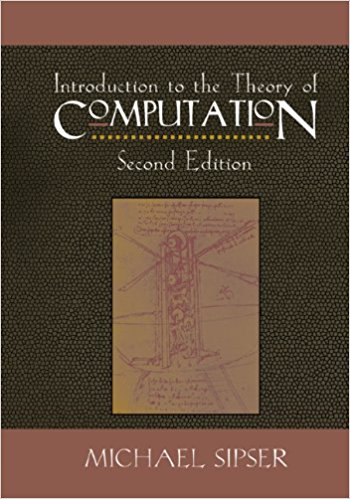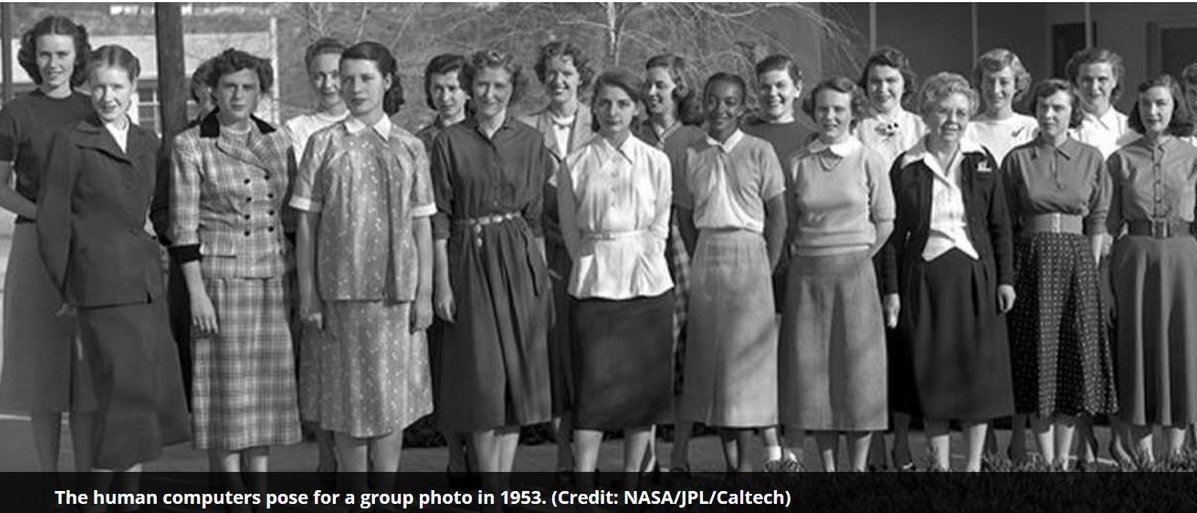N or Space for next slide, P for previous slide, F for full screen, M for menu
Lec 6: NAND++
Boaz Barak (instructor), Brian Sapozhnikov (Head TF), Albert Chalom, Alexis Ross, Charles O’Mara, Daniel Chen, David Li , Jambay Kinley, Jane Ahn, John Shen, Josh Seides, Laura Pierson, Pranay Tankala, Raymond Lin, Theresa Nguyen, Wanqian Yang, William Fu, Hikari Sorensen (Extension TF), Eric Lu (Patel Fellow)

Laptops/phones only on last 5 rows please.
Sipser

Infinite functions
Up till now: Talked about finite functions \(F:\{0,1\}^n \rightarrow \{0,1\}^m\)
Today: First introduction to infinite functions \(F:\{0,1\}^* \rightarrow \{0,1\}^*\)
Or is it?

\(PROD:\mathbb{N}\times \mathbb{N}\rightarrow \mathbb{N}\). Equivalently \(PROD:\{0,1\}^* \rightarrow \{0,1\}^*\)
NAND++
Which of the following functions is computable by a NAND++ program? pollev.com/cs121
a. \(ADD(a,b) = a + b\).
b. \(MULTIPLY(a,b) = a \cdot b\)
c. \(LOG(a,b) = \max \{c \in \mathbb{N}: b^c \leq a \}\).
d. All of the above
NAND++
Which of the following functions is computable by a NAND++ program? pollev.com/cs121
a. \(ADD(a,b) = a + b\).
b. \(MULTIPLY(a,b) = a \cdot b\)
c. \(LOG(a,b) = \max \{c \in \mathbb{N}: b^c \leq a \}\).
d. All of the above
Why NAND++?
Goal: Compute infinite function \(F:\{0,1\}^* \rightarrow \{0,1\}\) with finite set of instructions.
Need to handle \(\text{Input length} \gg \text{Program length}\).
- Repeat same instructions many times. Loops!
- Allow access to memory \(\gg\) program length. Arrays!
NAND + LOOPS + Indexing = NAND++
NAND++ features
- Go back to beginning at the end as long as
loop. Effectively
do {
...code...
} until loop==False
- Arrays via the special index variable
i. Variable such asTemp[i]replaced withTemp[\(val\)]where \(val\) is current value ofi
- Index variable
iin enhanced NAND++ controlled viai += foo,i -= foooperations.
- In vanilla NAND++ travels obliviously in sequence \(0,1,0,1,2,1,0,1,2,3,2,1,0,1,\ldots\). “T vs Uber” f . . .
NAND++ view 2
If \(P\) is a vanilla NAND++ program, to execute \(P\) on \(x\in \{0,1\}^*\) do:
- Let \(n=|x|\). Initialize the variables
X[0]…X[\(n-1\)]to \(x_0,\ldots,x_{n-1}\). InitializeXvalid[0]…Xvalid[\(n-1\)]to \(1\).
- Set \(\ell=0\), \(t=0\).
- Do “search and replace” on the code of \(P\) replacing
iwith \(\ell\).
- Run the lines of \(P\) as it was a NAND program, updating all variables accordingly.
- If
loop\(= 0\) then break and outputY[0]…Y[\(m-1\)]where \(m\) is the smallest such thatYvalid[\(m\)]\(=0\).
- Otherwise set \(t= t+1\), \(\ell = Index(t)\) and go back to 3.
Exercise: Break out in groups and explain the above to one another. Make sure you understand why this is equivalent to the definition in the book.
NAND++ view 2
If \(P\) is a vanilla NAND++ program, to execute \(P\) on \(x\in \{0,1\}^*\) do:
Let \(n=|x|\). Initialize the variables
X[0]…X[\(n-1\)]to \(x_0,\ldots,x_{n-1}\). InitializeXvalid[0]…Xvalid[\(n-1\)]to \(1\).Set \(\ell=0\), \(t=0\).
Do “search and replace” on the code of \(P\) replacing
iwith \(\ell\).Run the lines of \(P\) as it was a NAND program, updating all variables accordingly.
If
loop= 0 then break and outputY[0]…Y[\(m-1\)]where \(m\) is the smallest such thatYvalid[\(m\)]\(=0\).Otherwise set \(t= t+1\), \(\ell = Index(t)\) and go back to 3.
Exercise: “unrolling the loop”
Exercise: Suppose that \(P\) is a NAND++ program that computes a function \(F:\{0,1\}^* \rightarrow \{0,1\}\). Suppose that moreover that for every \(x\in \{0,1\}^n\), the number of lines that \(P\) executes before it halts is always at most \(n^2\).
Prove that there is a NAND program \(Q\) with \(n\) inputs and one output and at most \(10\cdot n^2\) lines, such that for every \(x\in \{0,1\}^n\), \(Q(x)=F(x)\).
Exercise: “unrolling the loop”
Exercise: Suppose that \(P\) is a NAND++ program that computes a function \(F:\{0,1\}^* \rightarrow \{0,1\}\). Suppose that moreover that for every \(x\in \{0,1\}^n\), the number of lines that \(P\) executes before it halts is always at most \(n^2\).
Prove that there is a NAND program \(Q\) with \(n\) inputs and one output and at most \(10\cdot n^2\) lines, such that for every \(x\in \{0,1\}^n\), \(Q(x)=F(x)\).
Turing machine
Models person with:
Unbounded sheet of paper (“tape”)
Finite working memory (“states”)
Each step: Read/Write one symbol, update memory, move to adjacent tape location.
Example: Person computing \(a \times b\) using gradeschool algorithm.
Question: Why did Turing try to model a person and not an electronic computer?

Turing machine simulator
Exercise: what is constant
Talk in groups and decide which of the following quantities is constants - have bounded size independent of how long the input is:
The number of lines in a NAND++ program
The number of states in a Turing machine
The maximum value that the index variable
iachieves in a NAND++ execution.The rightmost position that the head of a Turing machine reaches during an execution.
The number of symbols in the alphabet of a Turing machine.
The number of variable identifiers in a NAND++ program.
The number of bits needed to describe a Turing machine’s state transition function.
Exercise: what is constant
Talk in groups and decide which of the following quantities is constants - have bounded size independent of how long the input is:
The number of lines in a NAND++ program
The number of states in a Turing machine
The maximum value that the index variable
iachieves in a NAND++ execution.The rightmost position that the head of a Turing machine reaches during an execution.
The number of symbols in the alphabet of a Turing machine.
The number of variable identifiers in a NAND++ program.
The number of bits needed to describe a Turing machine’s state transition function.
What is a constant?
The NAND++ program size, NAND++ number of variables, Turing machine states, alphabet and state transition are fixed in advance. (before we get the input)
The number of execution steps of NAND++/TM, position of index variable /head all depend on the input length. (grow with the input length)
The point of NAND++/Turing machines: A constant sized recipe how to execute an unbounded in advance number of operations.
High level takeaway
What is computation? Local evolution of global state according to a finite set of instructions.
DNA, physical systems, bee colonies, slime mould, markets..
Syntactic sugar: \(i+= foo\) and \(i-= bar\)
Three types of memory access:
- Oblivious: Topology is fixed in advance independent of input. (NAND, vanilla NAND++, Hardware, Internet,..)
- Sequential: Memory is one dimensional array, can travel on it one step at a time. (enhanced NAND++ with \(i++/i--\) sugar, Turing machines)
- Random access: Memory is array/dictionary, can access memory at any address at unit cost. (RAM machines, programming languages)
Vanilla to enhanced NAND++
Question: How do we implement i+= foo and i -= bar in NAND++?
Answer: “Breadcrumbs” and “wait for bus strategy”
indexincreasingset to \(1\) when atAtstart[i]\(=1\),set to \(0\) when observe a new place (Breadcrumbs[i]\(=0\)).
“Breadcrumbs” and “Wait for Bus”
Breadcrumbsarray initialized to \((0,0,\ldots)\),Breadcrumbs[i]set to \(1\) at the end of every loopindexincreasingset to \(1\) when atAtstart[i]\(=1\),set to \(0\) when observe a new place (Breadcrumbs[i]\(=0\)).

Two-tape TMs = One-tape TMs
Exercise: Prove that \(F\) is computable by one-tape TM if and only if it is computable by two-tape TM.
Two-tape TMs = One-tape TMs
Exercise: Prove that \(F\) is computable by one-tape TM if and only if it is computable by two-tape TM.
Two-tape TMs = One-tape TMs
Idea: Odd location tape 1, Even location tape 2.
Add “marker” for heads location: \(\Sigma \mapsto \Sigma \times \{ m,u \}\)
Simulate one step:
- Start in even location: go in jumps of two to find “even head” and read value.
- Move to odd, find “odd head” and read value
- Compute new state, vals to be written, directions.
- Scan to find heads and update.
New state: \([k] \mapsto [k] \times [k'] \approx [k\times k']\)
Types of results in CS 121
- Computation results: Function \(F\) is computable in model \(A\). Mathematically: Show exists program/machine \(P\) in model \(A\) such that for every \(x\in \{0,1\}^*\), on input \(x\) program \(P\) outputs \(F(x)\).
- Simulation/equivalence results: Every function \(F\) computable by model \(A\) is also computable by model \(B\). Mathematically: Show that for every program \(P\) in model \(A\), exists program/machine \(Q\) in model \(B\) such that for every \(x\in \{0,1\}^*\) on which \(P(x)\) outputs \(y\), \(Q(x)\) outputs \(y\) as well.
Interplay:
Use computation results to show equivalence results.
Once we have equivalence results, can prove computation results in the most convenient model.
Infinite loops
temp = NAND(X[0],X[0])
loop = NAND(X[0],temp)
For NAND programs: for every input \(x \in \{0,1\}^n\), \(P(x)\) produces an output \(y\in \{0,1\}^m\).
For NAND++ programs: some programs on some inputs might fail to halt.
NAND vs NAND++
NAND: No loops: \(s\) lines = \(s\) computational steps. Can access at most \(3s\) memory location. straightline program / circuit
NAND++: Loops: same line can be repeated in many steps: num steps \(\gg\) num lines Arrays: index variable moves between iterations: memory usage \(\gg\) num lines
Let \(XOR:\{0,1\}^*\) be such that \(XOR(x) = x_0 + x_1 + \cdots + x_{n-1} \mod 2\).
Theorem: There is NAND++ program \(P\) to compute \(XOR\).
It’s not that NAND can’t compute \(XOR\). It’s a category error!
Theorem: For every \(n\in \mathbb{N}\), there is a NAND program \(P_n\) to compute \(XOR_n\): restriction of \(XOR\) to inputs of length \(n\).
Next up
More proficient in understanding our models and moving between them.
Food for thought: Consider the function \(reverse:\{0,1\}^* \rightarrow \{0,1\}^*\) such that \(reverse(x_0 \cdots x_{n-1}) = x_{n-1}x_{n-2}\cdots x_0\).
- Write a program to compute \(reverse\) in your favorite programming language
- Think of you would write a NAND++ program to compute \(reverse\).
- Same for Turing machine, \(\lambda\)-expression, NAND<< programs.
Configurations
At given point in time, can encode all of the memory contents and state of NAND++ program / Turing machine as finite string.
Length of string = O(number of steps so far)
Configuration at step \(\ell\) very similar to configuration at step \(\ell + 1\). Differs only in constant number of bits
Think in groups: How would you encode the configuration of a program as a string? You can be wasteful in space, but try to make sure that computing the next configuration from the previous one is as simple as possible. Choose vanilla/enhanced NAND++ or Turing machines as per your convenience